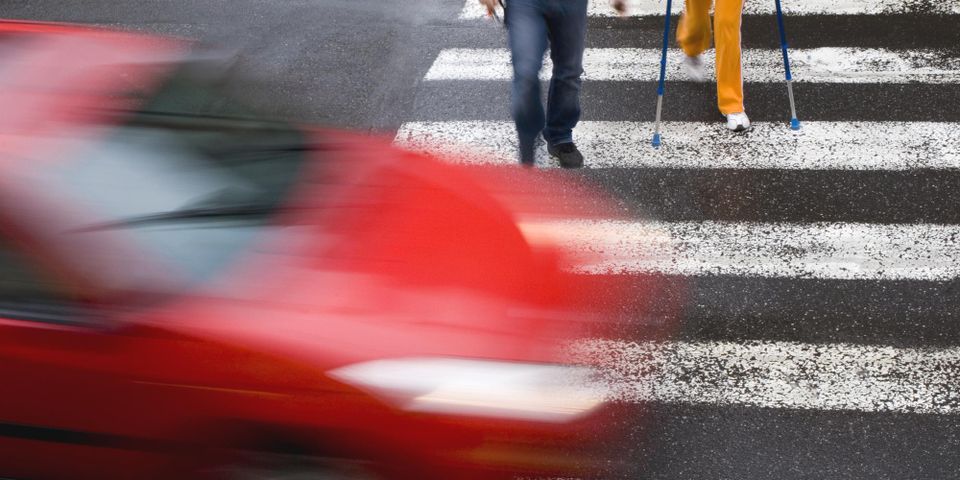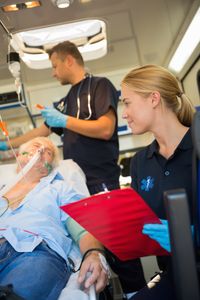4 Questions a Lawyer Asks When You're Hit by a Car

Despite many laws designed to keep pedestrians safe, the road can be a dangerous place for those who venture on foot. A driver can get distracted and hit a person walking nearby before they even realize to yield. When it’s a car versus a person, the car always wins the initial battle, but when it comes time to go to court, your personal injury attorney will do their best to make sure you win the proverbial war.
Questions Your Personal Injury Attorney Will Ask After an Accident
Were you injured?
 If you’re injured even slightly, you should immediately seek medical attention both for your health and your legal rights. If you have to take your case to court with a personal injury attorney, this record of timely medical assistance can be compelling evidence in support of your claims. The attending physician should know you were injured in a car accident and take detailed notes for your medical record. Thorough medical documents can narrow the grey area the insurance company has to work with when handling a claim, and they can give the court direction when determining appropriate damages.
If you’re injured even slightly, you should immediately seek medical attention both for your health and your legal rights. If you have to take your case to court with a personal injury attorney, this record of timely medical assistance can be compelling evidence in support of your claims. The attending physician should know you were injured in a car accident and take detailed notes for your medical record. Thorough medical documents can narrow the grey area the insurance company has to work with when handling a claim, and they can give the court direction when determining appropriate damages.
Who is liable?
If a car hits a pedestrian, there are a couple of people who could be liable depending on the circumstances:
- The driver is usually to blame because they are responsible for yielding to pedestrians. Even if they have a green light, if they turn right into a crosswalk and hit someone, drivers are in the wrong if the person was in a crosswalk when they had a walking sign. The driver will almost always take responsibility if they run a red light, drive over the legal speed limit, are texting or otherwise distracted, or are under the influence of drugs or alcohol. Other cases can occur where the driver who directly hit the person isn’t liable because they swerved to avoid hitting another car. The other driver who caused the erratic swerve could then take the blame.
- The pedestrian becomes liable when they jaywalk into oncoming traffic. In this case, the driver can still share the blame by, once again, not using caution or yielding to pedestrians, but if the jaywalker blatantly disregards the hazard of oncoming cars when walking across the street, they can be at fault. The driver should have the opportunity to yield, but if a pedestrian jumps up from behind a car and gets hit, the court may consider that negligence on the walker’s part.
- The municipality can take the blame in a couple of circumstances. If the street has a poor layout—like if a crosswalk sits on a bend—then neither the driver nor the pedestrian could reasonably yield to each other. A traffic light malfunction could also cause these accidents, during which both the driver and the pedestrian think they have the right of way.
Did the driver stop at the scene?
If they did, and you went through the basics of exchanging names and insurance information, you can pursue compensation through insurance. Whether you file the claim to the driver’s insurance company or your own depends on if you live in a “no-fault” state. States that have no-fault auto insurance laws streamline the compensation process by having the injured file a claim with their own company, regardless of who is legally responsible for the accident. In states without these laws, you will find yourself arguing back and forth with the insurance company of the liable party.
In either circumstance, the insurance company will often either try to low-ball its offer to spend the least amount of money possible on your claim or argue who was to blame in the first place. If they deny your claim or their offer is too low to cover the damages you’ve suffered from this accident, you can hire a personal injury attorney to take the settlement to civil court.
If you landed a case of a hit-and-run, your options narrow a bit. While there are no guarantees that the police will catch the offender, if they do, the driver will have to face criminal charges in addition to paying you damages through their insurance.
How much evidence did police gather at the scene?
Regardless of if the driver stays at the scene, it is beneficial to file a police report and have the authorities gather as many witness accounts as possible. If the case does go to court, your personal injury attorney can use a detailed police report to substantiate who is legally at fault and what you are owed. Strong evidence that could help you include photographs, which can document the scene, vehicles involved, traffic signals, debris, skid marks on the road, weather, and road conditions. Any statements made by either party at the scene may also come up in court, so it is important to choose your words carefully when speaking to the authorities.
Insurance companies try to capitalize on grey areas in personal injury cases, which is why you need a tenured lawyer to close the gap between the circumstances and the truth. Bellotti Law Group, PC, has served Boston, MA, residents who have faced injuries from car accidents for almost 30 years. Whether you need full legal representation or just a consultation with one of their dedicated attorneys, their team will help you find the best solution to your legal issues. For more information about their full range of legal services and to schedule a free consultation, call (617) 778-1000 or visit their website.
About the Business
Have a question? Ask the experts!
Send your question

